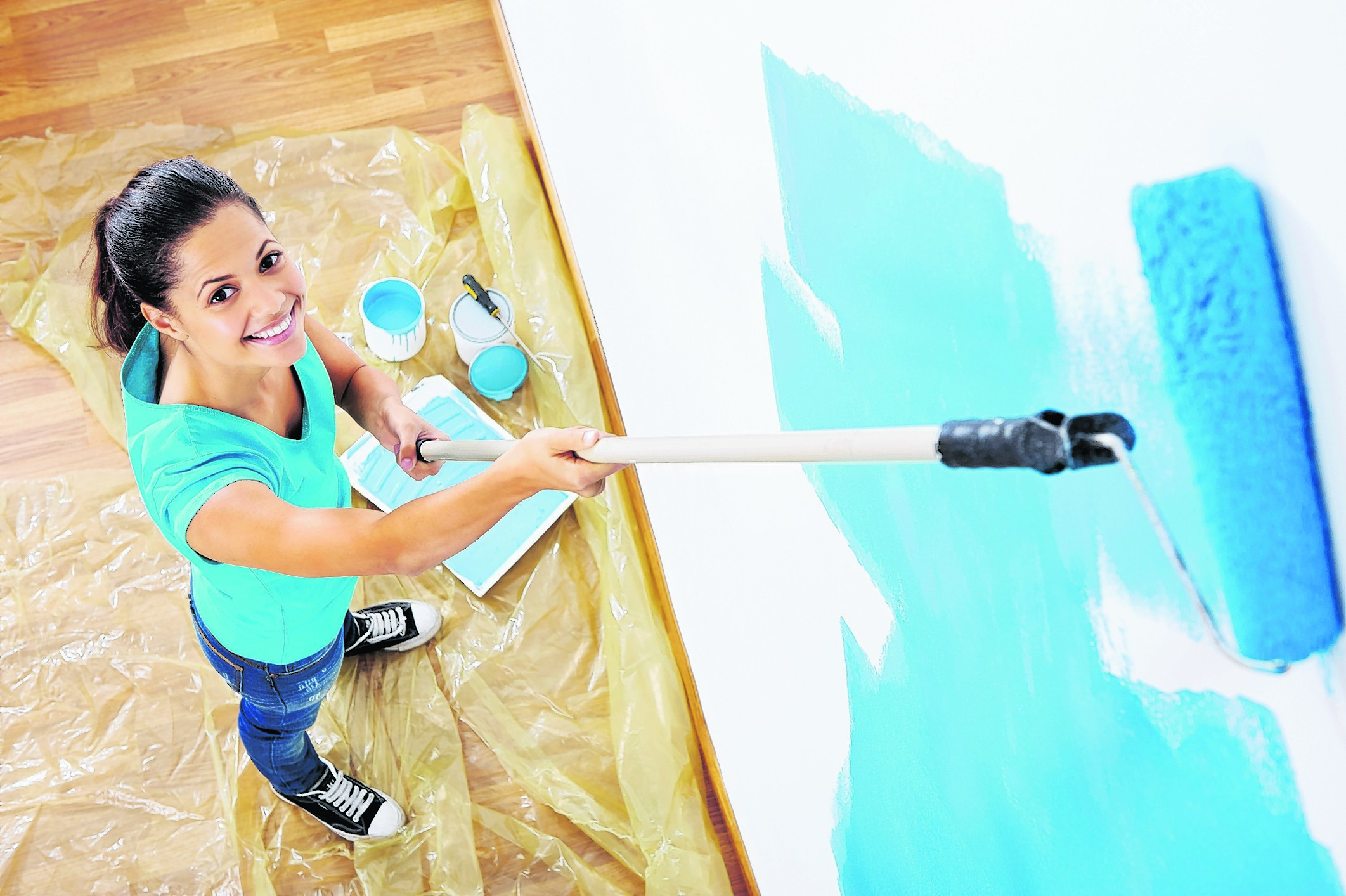Newly plastered walls and ceilings look great, but painting them can throw up problems. Julia Gray is here to help
Before painting newly plastered walls and ceilings, you first need to seal the plaster.
New plaster is very absorbent, and although there are paints and sealers designed for it, a common way to seal it is with watered-down emulsion, as the plaster sucks
up the water. Painting plaster before it’s fully dry can cause the paint to peel, giving you endless problems, so don’t start too soon.
Watered-down emulsion is messy to work with because it drips much more than standard emulsion. Be careful to wipe, roller or brush out drips immediately to avoid a bad finish. The drips dry quickly because the plaster’s so absorbent. If your topcoat is white, use watered-down white emulsion for sealing, or you’ll end up doing more coats of topcoat than you need to.
Another problem with using a white topcoat on new plaster is that you can get patches where the topcoat needs several coats to cover. To save time and paint, use a basecoat emulsion on these patches, which should cover them in one or two coats. Basecoats are designed to cover problems like dark colours, stains and hairline cracks, depending on the product.
A really good paint for covering these patches is Crown Solo One Coat Matt Emulsion in Pure Brilliant White (£17.99 for 2.5ltr, Homebase), which you can use instead of a basecoat or as the topcoat, missing out the basecoat stage. One-coat emulsions can be good time-savers, but some give a patchy finish, which can look terrible, especially in the light from a window or door, so choose carefully.
If patches of new plaster don’t dry out, they’re probably damp. Often the best solution is to remove the plaster back to the brickwork and get a plasterer to do a waterproof render before replastering. This should stop any moisture in the brickwork coming back through the plaster. The cause of the damp should also be addressed.
Alternatively, there are quick fixes, such as applying damp paint/seal to the damp patches and then painting, tiling or cladding the wall (with tongue-and-groove panelling, for example). However, you’re covering the damp rather than dealing with it and it may come through again once the damp paint/seal starts to fail.
